How to Get Kids Interested in Outdoor Survival
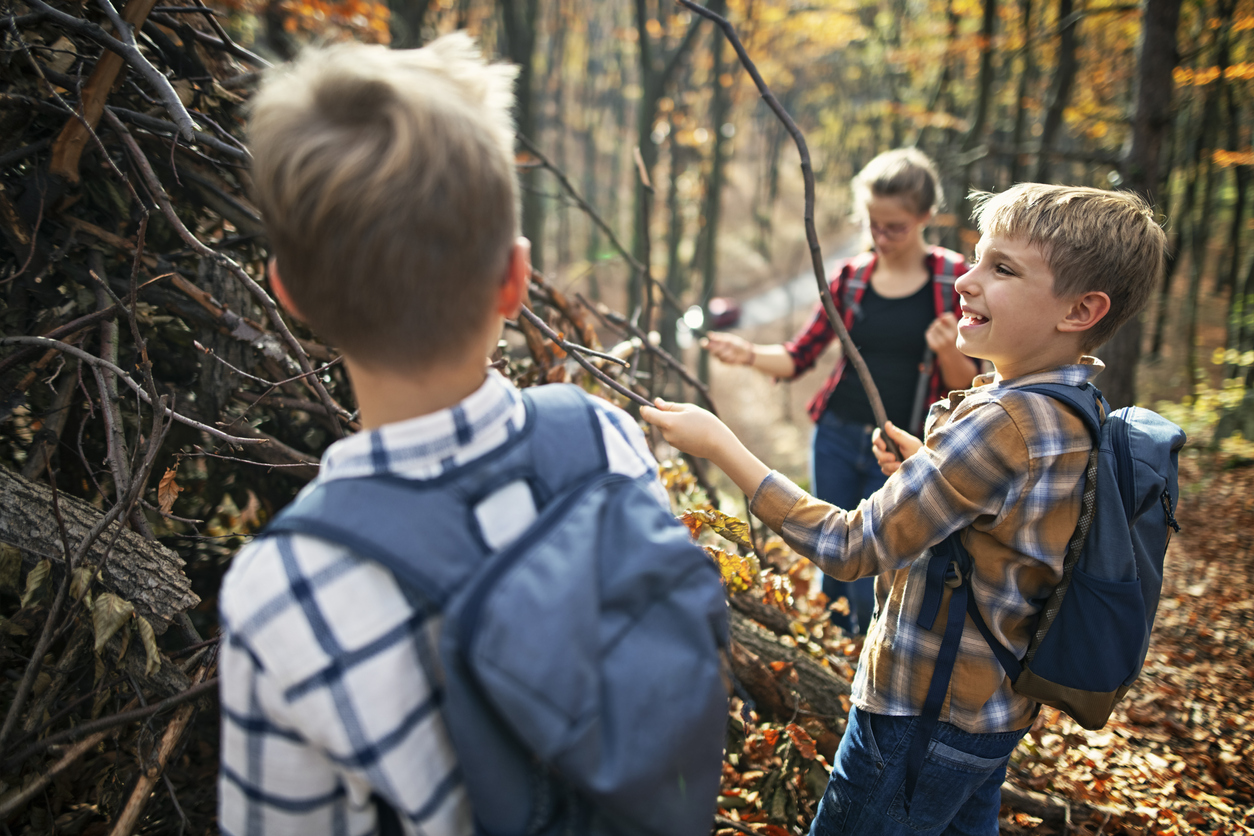
Getting children interested in outdoor bushcraft and survival skills has been one of the major goals of my career, and there is a lot of evidence that outdoor activities are enormously beneficial to young and old alike.
On top of benefits to mental health, wellbeing, confidence, and the fact that increased exposure to nature and the outdoors can help children develop an appreciation of nature and the environment, there is the obvious link between survival skills and the safety, resilience, and capability of those children when taking part in potential emergency situations.
My own children at ages 8, 6, and 2 all know what the recovery position is and how to call an ambulance in a medical emergency.
They have all practiced how to put their mother and me in the recovery position should we be injured or incapacitated at home or while we are out and about, and this fills me with confidence that they will not only be able to help us in an emergency; should a friend, school mate, or neighbor be hurt, they might be able to help.
First aid is the first priority in a survival situation if there is an injury because no one ever died of hunger within minutes but they can easily die of blood loss or due to a compromised airway within minutes.
For this reason, I have prioritized first aid amongst the survival skills I have taught my children, and because we spend so much time outdoors I think it’s very important that they have those skills
. I don’t expect them to be able to apply a tourniquet or do CPR yet but the recovery position can and does save people’s lives, and practicing it is a fun and not too traumatic introduction to first aid for young children.
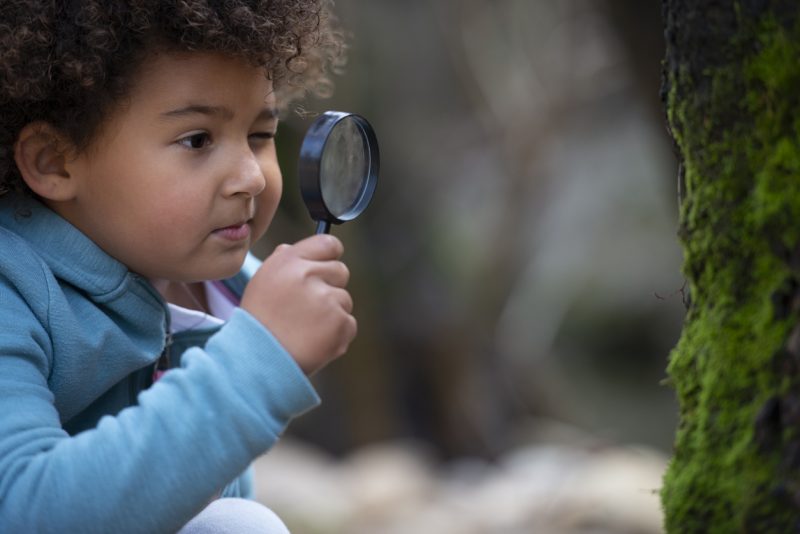
Beyond the essentials of first aid, there are a lot of survival skills that children love to learn, and it’s always good to start with the skills they will enjoy practicing.
It’s no good putting children off the outdoors with a militaristic approach to survival skills training; practice skills with them that they will enjoy and that are within their grasp – you don’t need to train them to be zombie slaying, Mad-Max-style survival machines. (Don’t forget zombies aren’t real!)
4 Top Outdoor Survival Lessons for Children
Knife Skills
It’s a popularly-held opinion amongst city folk that knives are dangerous weapons. Knives are far too often seen as weapons rather than tools when in actual fact they are not different from a screwdriver or a wrench.
This perception of them as a weapon puts parents and teachers off letting their children use them. There is also the health-and-safety-mad culture we live in which may, from an institutional point of view, make it difficult to use knives with children in a school setting – or from a parenting point of view, make you so worried about the consequences of giving your child a knife that you just don’t.
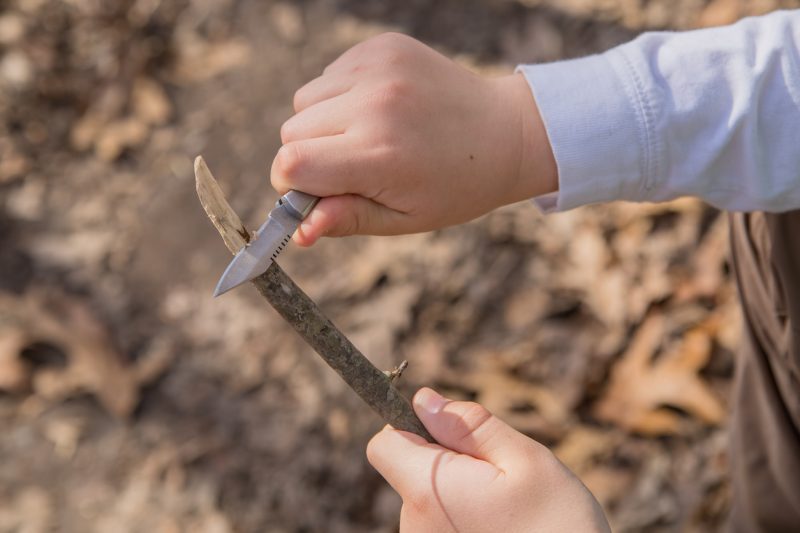
In actual fact, children really benefit from being trusted with “grown-up” tools as long as they are supervised properly. Being trusted to do some whittling or carving is a massive confidence boost to them, and if they do it regularly it is great exercise.
We are living in a day and age when children are tending more and more towards obesity and are weaker and have less stamina than children from previous generations because they aren’t made to do physical chores anymore and spend far too much time swiping and prodding at iPads and phones.
Being able to sharpen a stick to toast a marshmallow or make a whistle or some simple beads with a knife and a piece of willow fills a child with confidence, will improve their behavior because they appreciate that they are trusted with “grown-up” jobs, and will make them stronger and more dextrous.
There are all sorts of awesome things that young children can achieve with a knife and a bit of help. My youngest son’s specific knife-related chore at the moment is cutting up fungi that we have foraged (he is two). He also does other simple cooking chores around the campfire or in the kitchen at home.
Fire
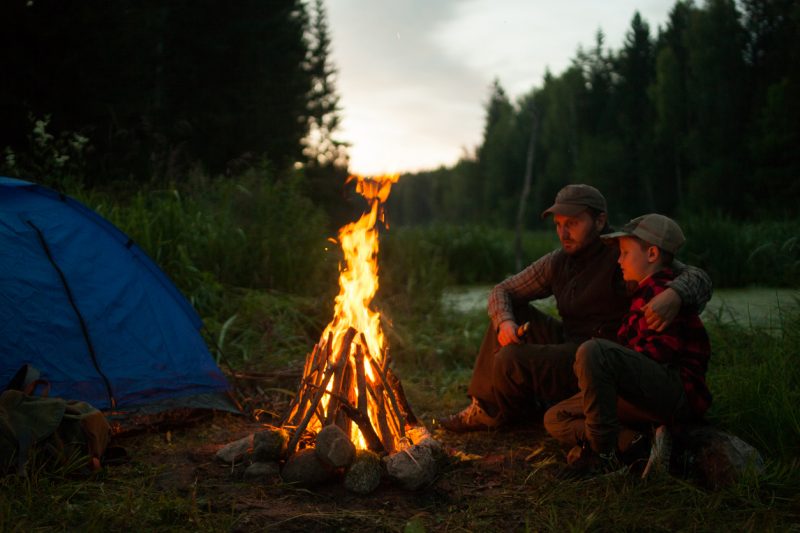
Staring into the flames of a camp fire beats TV hands down, and children love to make fire. Even young children can learn to use a simple fire steel for fire lighting.
Children learn very quickly how to light and build fires, and once this basic skill is mastered with matches and fire steel they can move on to cooking on the campfire and combining this activity with their search for wild food.
Wild Food
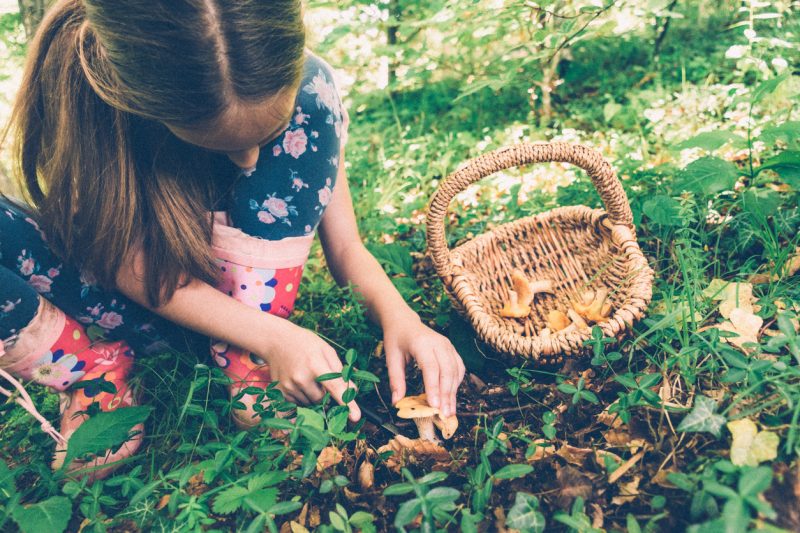
Collecting berries, mushrooms, and other wild food used to be part of everyday life, but this is less the case now than ever before as the convenience of supermarkets and takeaways and the diminishing knowledge among the general population makes wild food seem inaccessible and to many people“‘yukky.”
There is no excuse for this as there is a great variety of delicious wild food out there, and at a time when the cost of living is increasing dramatically, why not save a bit of cash and try some wild food instead?
Hunting berries has always been a favorite pastime of children, but why stop there? With careful supervision and teaching, children can pick mushrooms and help prepare wild game and fish. Also, consider the benefits of helping children who are picky eaters.
It’s all psychological really; they will eat something as long as they are enthusiastic about eating it, and how better to build that enthusiasm than to find it, pick it, and cook it before they eat it? They will love it even if it’s disgusting after that build up.
DISCLAIMER; make sure you teach your children not to eat anything they pick until you have confirmed that it is safe to eat, and make sure your knowledge, particularly when it comes to fungi, is up to scratch. You’d never forgive yourself if you accidentally poisoned one of your children.
Shelter
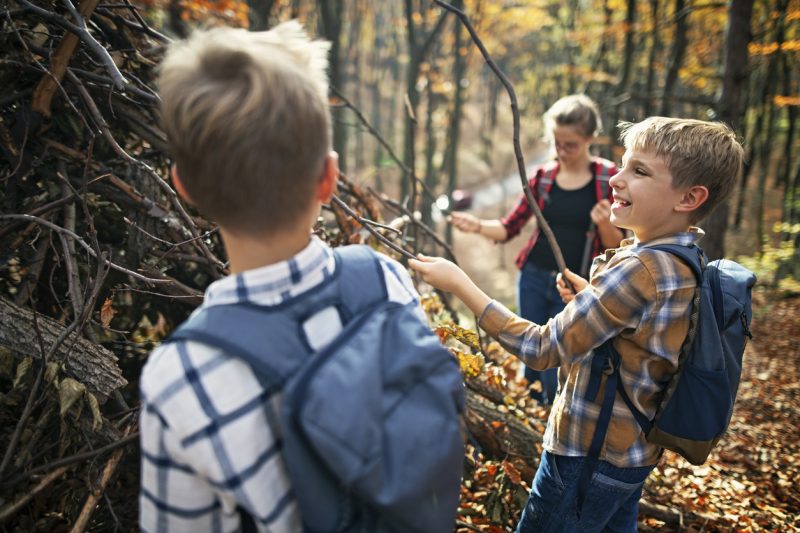
Children love building – whether it’s dens made out of blankets under a dining table, towers with blocks, or dens in the garden, they love it! So why not take it a step further and build them a survival shelter? Simple tarps are a great place to start, and sleeping out underneath one will be a great adventure.
Remember everything is an adventure to young children, and getting them into the habit of spending time outside and not thinking of mud and rain as bad at a young age will be very beneficial to them in the future whether they encounter a true survival situation or not.
Why not take it to the max though and build a log cabin? A couple of years ago, my oldest and I built a little child-sized cabin in our woods for him and his brother and sister to sleep in.
He loved it; it was a hard day’s work but he carried logs, helped saw the notches, built a camp bed, and tended the fire throughout the day without complaint. He has loved going back there to stay regularly.
The great thing about the outdoors and survival skills is that although I have found these four skills/activities to be particularly engaging for children, this list isn’t exhaustive.
There are literally unlimited opportunities for engaging children with survival skills, and even if at first it’s just a bit of fun, it will set those children up to learn more advanced skills as they grow and to be much more prepared than the average person in the case of real danger.
